Life Cycle of Lice: Stages
Eggs (Nits): Tiny, white, laid on hair shafts.
Nymphs: Young lice, hatch from eggs, mature quickly.
Adults: Fully grown lice, can lay more eggs.
What if the key to easing your child's anxiety about head lice lies in open conversations? Empowering children with knowledge about lice can transform an uncomfortable situation into an opportunity for growth and understanding.
Delve into the stages of head lice development and key prevention strategies to keep your family informed and protected.
Eggs (Nits): Tiny, white, laid on hair shafts.
Nymphs: Young lice, hatch from eggs, mature quickly.
Adults: Fully grown lice, can lay more eggs.
Avoid head-to-head contact during play.
Emphasize personal item rules (no sharing hats, brushes).
Encourage frequent hair checks, especially after social activities.
Talking about head lice can be a sensitive topic for many families. The emotional impact of lice can be significant, especially for children who often feel embarrassed or anxious about the situation. It's crucial to approach this subject with care and understanding, as children may carry misconceptions that can heighten their distress. By fostering open conversations, we can help alleviate fears and empower our kids to face this common challenge.
Many kids believe that getting lice means they are dirty or that they are somehow unclean. These misconceptions can lead to feelings of shame. As parents and caregivers, it's our job to educate them on the reality: lice can affect anyone, regardless of cleanliness. This knowledge can help reduce the emotional toll associated with an infestation. For more detailed information on head lice, refer to the CDC's comprehensive guide on head lice.
One of the first steps in addressing head lice is recognizing the emotional hurdles it presents for children. The anxiety that comes with the idea of bugs on their head can be overwhelming. Kids may worry about teasing from peers or feel singled out in school. It’s essential to validate their feelings while also imparting the right information.
By addressing these emotional impacts openly, we can reduce anxiety and help children feel more in control. Remember, the goal is to create a supportive environment where they can ask questions and feel heard.
When discussing head lice, it’s vital to tailor your communication methods based on your child's age. Each developmental stage requires a different approach to ensure they understand without feeling scared or overwhelmed. For instance, preschoolers may need simple explanations, while tweens can handle more detailed discussions. The California Department of Public Health offers guidance on managing head lice in school settings, which can inform these conversations.
By using age-appropriate language, we make it easier for children to understand the situation, lessening their fear and confusion. This foundational understanding will help them respond more positively if they ever encounter lice.
Once we've established open lines of communication, it’s equally important to equip our children with effective lice prevention techniques. Empowering them with knowledge on how to avoid lice will help them feel confident and proactive.
Prevention starts with awareness and simple practices that children can easily follow. Here are some strategies to share with your kids:
Incorporating these practical steps into their daily routines can significantly reduce their risk of getting lice. You can even turn this into a fun family activity, making it feel less like a chore and more like a shared responsibility!
Learning doesn’t have to be boring! By introducing games or activities, you can teach your children about lice prevention in a fun and engaging way. Here are some ideas to get started:
By making prevention education enjoyable, children are more likely to remember the strategies, ultimately helping them protect themselves from lice.
To truly grasp the importance of prevention, children should understand the life cycle of lice. Explaining how lice grow and spread can help them appreciate why we take these measures seriously. Here’s a simple breakdown:
Using visuals, like diagrams or animations, can help children visualize this cycle. This understanding reinforces the need for consistent preventive actions, making them feel more equipped to handle any lice situation.
Did you know? Regularly checking your child's hair for lice can significantly reduce the chances of an infestation. Make it a fun family ritual—turn it into a game where everyone gets involved. Not only does this promote vigilance, but it also normalizes the conversation around lice, making it less intimidating for your child!
Talking openly about head lice helps dispel myths, reduces anxiety and shame, and empowers children with knowledge to understand and prevent infestations.
No, head lice can affect anyone regardless of personal hygiene. This is a common misconception that often leads to feelings of shame in children.
For preschoolers, use simple analogies. For elementary children, explain how lice spread and the importance of not sharing items. For tweens, provide factual information and address their concerns directly.
Teach children to avoid head-to-head contact, emphasize not sharing personal items like hats and brushes, and encourage frequent hair checks, especially after social activities.
Incorporate games like "Lice Prevention Bingo," craft projects to make prevention posters, or storytelling about characters who overcome lice challenges.
Lice go through egg (nits), nymph, and adult stages. Understanding this cycle helps children appreciate the importance of consistent preventive actions and treatments.
Supportive environments encourage children to discuss health issues like lice openly and without shame, leading to better management and reduced anxiety.
Community involvement, through workshops, informational materials, and support groups, amplifies efforts to educate families and promote effective lice management.
As a health educator, I’ve seen firsthand how important it is to foster open discussions about head lice. When we encourage honest conversations, we not only empower children but also build resilience in them. This resilience can significantly reduce anxiety surrounding health issues. Children who understand what to expect are less likely to feel fearful or ashamed when facing common challenges like lice infestations!
By creating a safe space for dialogue, we enable our kids to express their feelings and concerns. This open approach can lead to greater awareness and responsibility regarding their health, fostering an environment where they feel supported and informed. Remember, knowledge is power, especially when it comes to health!
Engaging in direct conversations about head lice can have numerous long-term benefits for our children. Here are a few key advantages:
When we share accurate information and encourage questions, we pave the way for children to approach health issues with a sense of empowerment and clarity. This shift in mindset is invaluable as they navigate various challenges in life!
As parents and caregivers, it’s essential to instill a culture of vigilance regarding lice prevention. Regularly checking for lice should become part of our routines! Here are some practical tips to help maintain this awareness:
By embedding these practices into daily life, we promote a proactive approach to lice prevention. It’s not just about stopping lice; it’s about fostering a mindset of health awareness and responsibility! For effective pest management strategies that can be adapted for home use, you may find information from the EPA's resources on pest management helpful.
Creating supportive spaces where children feel comfortable discussing health-related issues is crucial. When children know they can talk about lice without shame or embarrassment, they are more likely to seek help when needed. At Lice Nits, we believe that fostering open communication between parents, educators, and children is vital in tackling the stigma associated with lice.
By nurturing a culture of support at home and in schools, we help children feel safe discussing their experiences and concerns. This supportive environment contributes to better management of lice and other health challenges they may encounter throughout their lives!
Community involvement plays a significant role in promoting lice awareness and prevention. Parent-teacher associations and local health initiatives can organize events focused on lice education, creating opportunities for families to learn together. Here are some ways to build community support:
When we come together as a community, we amplify our efforts in educating families about lice. The more informed we are, the better equipped we become to handle these common challenges!
As we wrap up this discussion, I encourage all parents and educators to adopt these strategies for effective lice education. Open communication and regular preventive practices are key to ensuring a stigma-free approach to lice management. Let’s work together to empower our children and create an environment where they feel comfortable discussing health-related issues!
At Lice Nits, we are here to support you with the resources and information you need. By fostering open dialogues and implementing preventative measures, we can significantly ease the stress associated with lice infestations. Let’s make this a team effort—together, we can promote awareness and health in our communities!
Here is a quick recap of the important points discussed in the article:

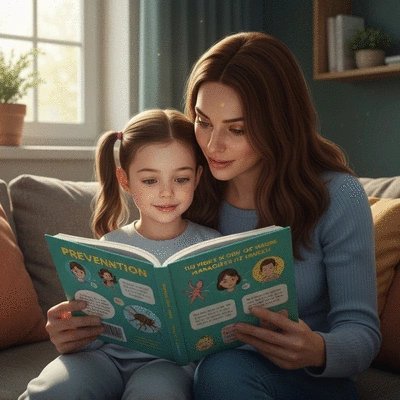
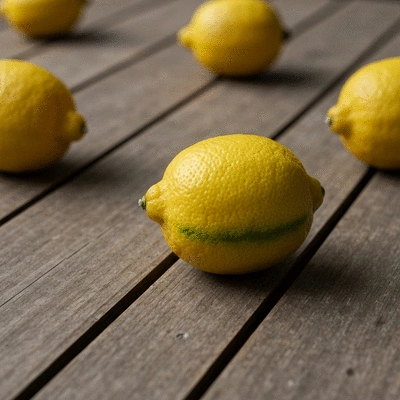
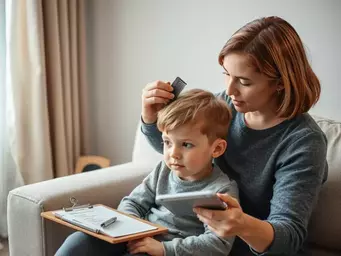 Have you ever felt the panic that arises when you discover head lice on your child's scalp? Understa
Have you ever felt the panic that arises when you discover head lice on your child's scalp? Understa
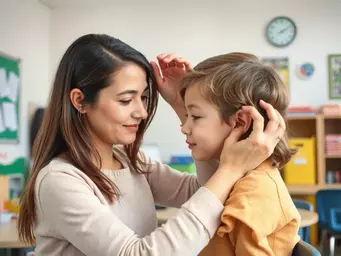 It's surprising how easily something as small as a head louse can disrupt an entire school community
It's surprising how easily something as small as a head louse can disrupt an entire school community
 What if the key to your child's comfort and well-being lies in understanding the aftercare process f
What if the key to your child's comfort and well-being lies in understanding the aftercare process f
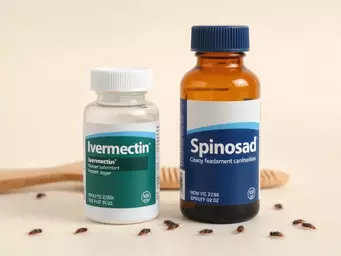 What if a single application could free your family from the stress of head lice? One-dose treatment
What if a single application could free your family from the stress of head lice? One-dose treatment